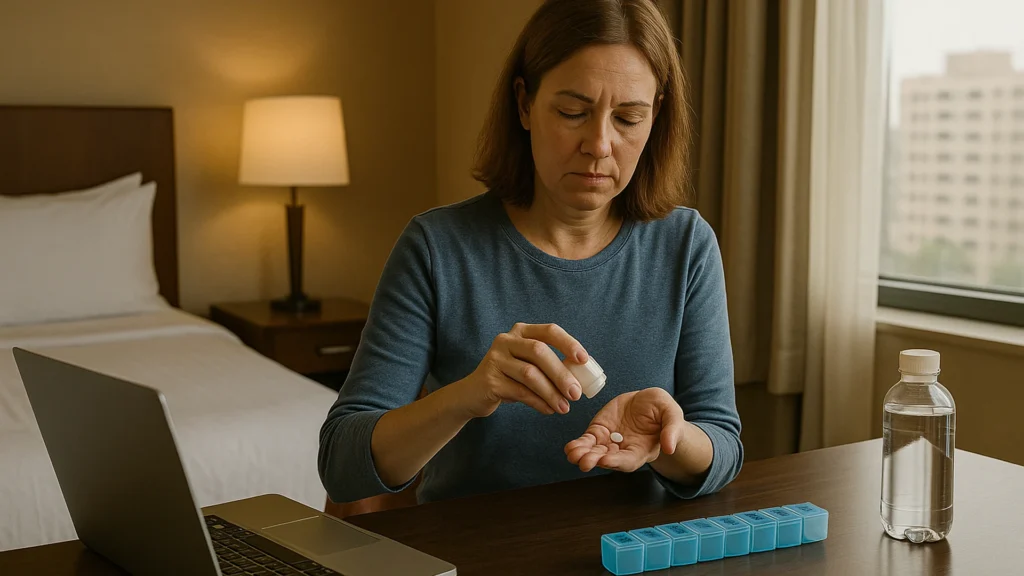If you’ve been thinking about a teaching role abroad, you’re not the only one. In 2015, there were 473,920 international teachers worldwide. A decade later, that number jumped 54% to 730,500. This growth means more educators are taking their careers abroad.
Teachers are choosing international schools for better pay, stronger job opportunities, and clearer career advancement. These teaching abroad trends reveal what’s actually pushing the change, instead of just romantic ideas about travel.
This article breaks down why more teachers are working overseas and what it means for your career. Let’s start with the money.
Higher Salaries and Lower Living Expenses
Teachers working abroad typically earn competitive salaries while spending far less on daily expenses than they would back home. For example, international school teachers in China make between $45,000 and $90,000 per year with housing covered, which beats the US starting salary of $44,992.
Plus, daily expenses like groceries, transport, and dining out cost less, so you can save more or enjoy life without constantly watching your budget. These financial advantages break down into three areas:
Tax-Free Income in Certain Countries
In countries like the UAE or Saudi Arabia, teaching positions come with a huge perk: no income tax. You keep your entire salary without any tax deductions.
That’s about 20-30% more money staying in your pocket compared to what you’d take home in Australia or the UK. When you combine tax-free earnings with lower daily living costs, your actual spending power increases even more.
Free Housing Eliminates Rent Expenses

Most international schools provide fully furnished apartments as part of your employment package. Just like that, your biggest monthly expense is gone. In cities like Sydney or London, rent eats up a massive chunk of your paycheck, sometimes half of what you bring home.
Now you might question the quality of these apartments. From what we’ve seen in our 18 years of experience, international schools often match or beat what you’d pay to rent privately in New York or San Francisco.
Flight Allowances and Health Benefits Included
Most overseas teaching contracts cover your annual flights home, plus flights for your dependents if you have them.
On top of that, comprehensive health insurance gets included for your family members at no extra cost to you. These benefits can be worth thousands of dollars beyond your base salary.
Teaching Jobs: More Options Abroad Than Home
One of the main reasons teachers look overseas is that there are simply more jobs available. Public school systems in Western countries like the US and Australia often experience budget cuts and hiring freezes. This makes positions scarce and competition fierce.
Meanwhile, international schools across Asia and the Middle East continue to expand and actively hire. As a result, teaching positions abroad are on the rise, while public school roles back home keep shrinking.
The contrast is clear. While your mates back home are applying to 15 positions and getting one callback, you could be choosing between multiple offers.
Career Growth Through Teaching Experience Abroad
Imagine you’re applying for a leadership role at your local school, competing against five other qualified candidates (all with similar resumes and interview skills). Having taught abroad can give you the edge that they don’t have.
It does that in two main ways:
International Schools Expand Your Resume
When you have international teaching experience on your resume, it shows professional growth beyond local systems. Employers see someone who can handle change, work with diverse student populations, and bring fresh perspectives to their school.
You gain a head start over your competitors from the get-go.
Different Teaching Methods Broaden Your Skills
Working in diverse education systems exposes you to teaching approaches you wouldn’t encounter at home. For example, you might learn inquiry-based learning in Singapore, project-based methods in Europe, or collaborative teaching structures in Japan.
These varied experiences reshape how you think about education. You start questioning old habits and finding better ways to connect with students in the classroom.
Cultural Immersion Beyond Tourist Experience

The best part about teaching abroad is that you become part of the community instead of just visiting it.
Think about it this way: A two-week vacation might give you surface-level exposure, but living there as a teacher for months or years connects you with how people actually live. You form genuine relationships with colleagues and students over time, not just polite exchanges with hotel staff or tour guides.
These connections lead to authentic cultural understanding you can’t get any other way. Their language, customs, and local perspectives become part of your daily life.
You gradually go from observing culture at a distance to actually participating in it. You make mistakes, learn what’s normal, and eventually feel at home in a place that once felt completely foreign.
That kind of change stays with you long after you return home.
Travel Perks: Exploring New Countries on Your Doorstep
A weekend flight from Seoul to Tokyo costs around $150. A similar-distance flight from Los Angeles to New York? Easily $300-400. Teaching abroad puts you in the middle of regions where international travel costs less than domestic trips back home.
Here’s what that actually looks like:
- Asia Opens Up Dozens of Countries: Teaching in South Korea or Shanghai means Thailand, Vietnam, Japan, and the Philippines are all just a short, affordable flight away. Budget airlines make weekend trips surprisingly cheap.
- Europe Becomes Your Backyard: If you’re teaching in Prague, you can reach Vienna in 4 hours by train for €30. No 12-hour flights, no jet lag, just hop on a train Friday after school, and you’re exploring a new country by dinner.
- School Holidays Give You Extended Travel Time: Your holiday schedule isn’t just two weeks in summer. You get Christmas break, spring holidays, and often generous mid-term breaks that let you explore entire regions properly instead of rushing through a long weekend.
- Bucket-List Destinations Become Weekend Trips: Teaching in Dubai? The Maldives is a 4-hour flight. Destinations that would require months of saving and planning from your home country become spontaneous weekend getaways.
Instead of saving for one expensive international trip every few years, you’re living in a location where exploring multiple countries costs less than a single vacation back home.
More Time for Life Outside the Classroom

Work-life balance is the bane of most teachers. A Pew Research Center survey found 54% struggle to manage their workload alongside personal time. Many international schools tackle this problem by structuring schedules differently.
For example, you typically get more planning periods per week compared to public school schedules back home. This is possible because international schools have smaller class sizes and more support staff, which reduces the administrative burden that can overwhelm teachers.
Reduced workload means you get actual time built into your schedule instead of rushing through lunch to prep for afternoon classes.
And with evenings and weekends free, you can explore your host country instead of being tied to your desk grading papers. That’s what teaching abroad offers beyond just the salary and travel perks.
Next Steps to Start Your Teaching Abroad Journey
The teaching abroad trends show no signs of slowing down. With international schools opening across Asia, Europe, and the Middle East each year, there are more opportunities than ever for qualified educators.
If you’re ready to explore this path, start by researching countries, programs, and certification requirements that match your goals. Teaching abroad can reshape your professional path and give you experiences you’d never get by staying in one place.
To learn more about international teaching placements and how to get started, visit Biography Shelf. We’ve been connecting teachers with schools worldwide since 2007.






































